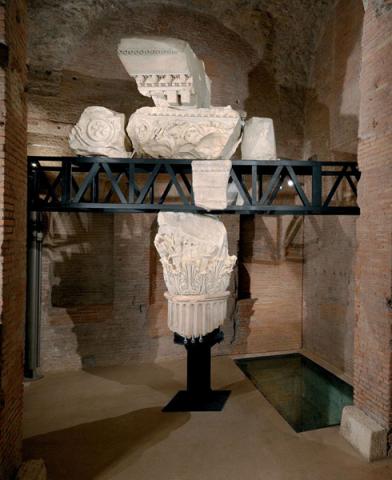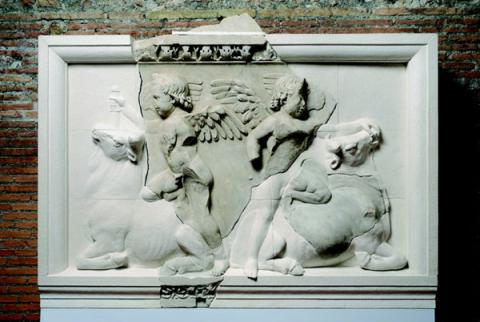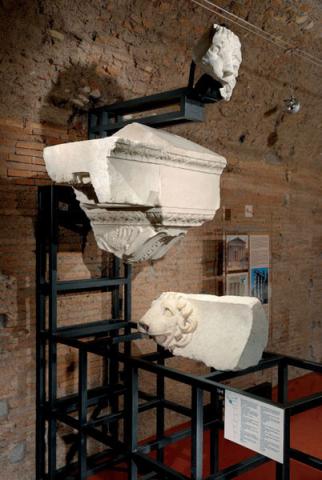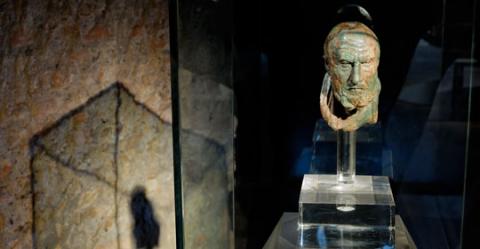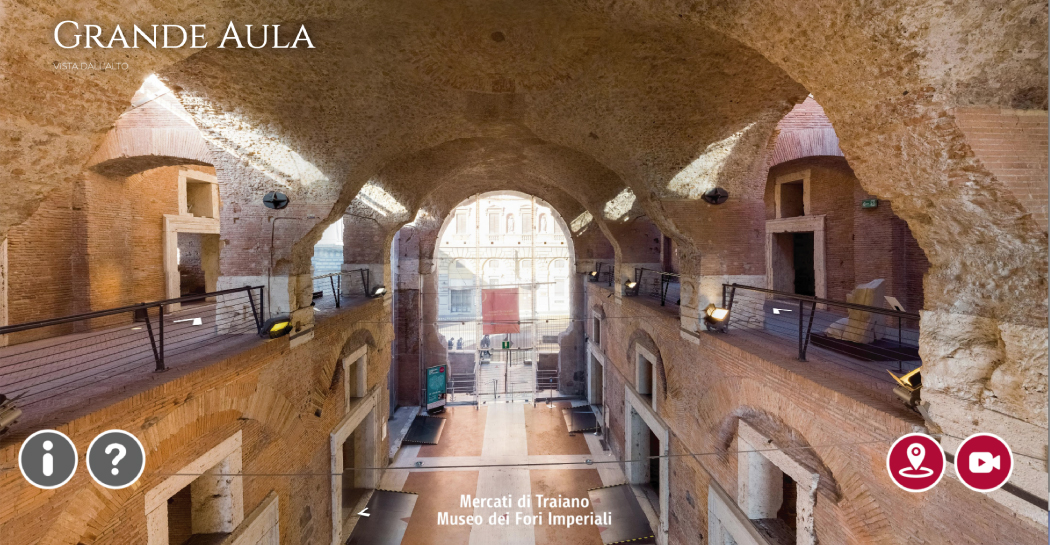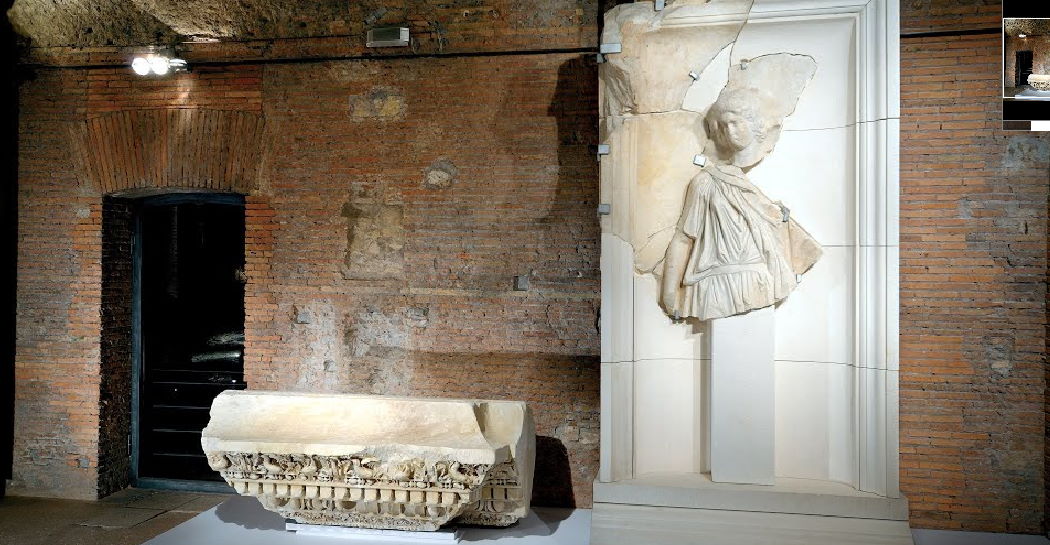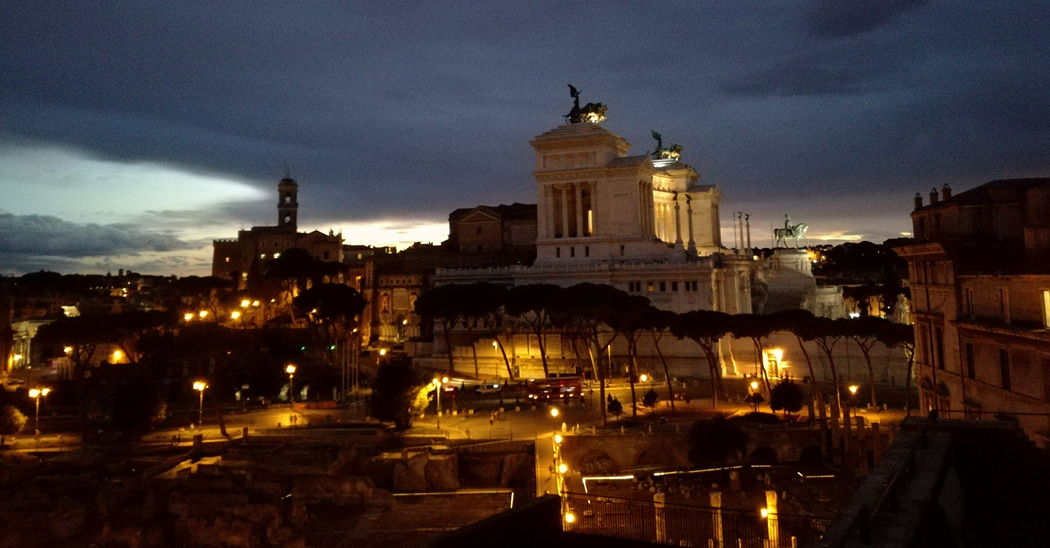Sezione del Tempio della Pace
Ancient sources mean that we have always known of the existence of the Templum Pacis, and its name underlines the differences in the design and layout of the complex in comparison to other Imperial fora and reinforces its sacred nature. Built on a quadrangular design and on a north west–south east axis, it was bounded by high brick walls made of blocks of Peperino (lapis albanus), a grey /brown stone of volcanic origin, and its monumental entrance on the north western side, facing the Forum of Augustus was adorned with massive columns, 1.30 in diameter, made in African marble.


The raised porticoes on the other three sides were characterized by their pink granite columns with Corinthian capitals in white marble, and the one at the rear opened up into an exedra-like room dedicated to peace with other rooms on either side. Some 52 pieces in the very hard red Porphyry marble were found during excavations. Originally from a labrum (a large receptacle used as a bath), they had been deliberately broken during the late Middle Ages so that they could be used in the building of a wall. The bath, which was 3.5m in diameter, had an overhanging lip decorated with a stylized Ionic kyma and a concave, hull-shaped profile and a flat umbilicated bottom. One of the pieces found is from one of the two handles depicting two entwined snakes. A reconstruction of the labrum, also made in red Porphyry, can be found in the room in the museum dedicated to the Templum Pacis, using some of the larger pieces found during the excavations. Pieces from statue plinths with inscriptions in Greek and a bronze head of the Greek philosopher Chrysippos can also be seen.



























